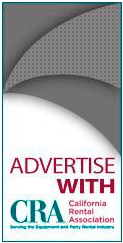
| Past Issues/Subscribe | Advertise |
Air Board Set to Stage Hidden Tax on Energy
The CalChamber Alert newsletter reported October 26, 2012 that the California Air Resources Board planned the state's first auction of carbon emission credits on November 14 as part of its program implementing AB 32, California's landmark climate change law. AB 32 set a goal of reducing greenhouse gas (GHG) emissions statewide to 1990 levels by 2020. The California Chamber of Commerce and other groups have been emphasizing that the auction is unnecessary to reduce greenhouse gas emissions and amounts to a multibillion-dollar hidden tax on carbon and therefore energy used by California businesses and consumers. "Under a legitimate 'cap-and-trade' system, the cap reduces the amount of carbon emitted, while the trading mechanism allows for the most cost-effective technology to be used," said CalChamber President and CEO Allan Zaremberg. "The auction is nothing more than a revenue-generating component so its supporters can finance their pet projects." Auction Not Necessary The nonpartisan Legislative Analyst's Office (LAO) agrees that an auction is not necessary to meet AB 32's goals. In response to a legislator's inquiry, Legislative Analyst Mac Taylor noted that "it is the declining cap on emissions that will reduce the state's overall level of GHGs—not the manner in which the allowances are introduced into the market. Thus, an allowance auction is not necessary to meet the AB 32 goal of reducing GHG emissions statewide to 1990 levels by 2020." Taylor went on to comment, "freely allocating 100% of available allowances can reduce the cost of compliance, as well as the overall economic impacts of achieving the goal of AB 32." Free Allocation Reduces Cost A key advantage of a totally free allocation, Taylor said, is that it "would offset significantly more of the marginal cost increase resulting from compliance with the program . . . and reduce the potential for leakage while preserving the environmental integrity of the program." Economic leakage, as noted in the LAO letter, includes consumers seeking lower-cost goods not produced in California, and firms deciding to relocate outside of the state, reduce their presence in California or close business due to the competitive disadvantage resulting from the cost to comply with the cap-and-trade program. California job losses are the ultimate consequence of all forms of "leakage." Minimal Potential Critics of the free allowances have argued that they will lead to windfall profits for businesses. The Legislative Analyst outlined two scenarios and concluded the potential for windfall profits was low in both cases: An energy-efficient company is given free allowances beyond what it needs to comply with the cap-and-trade regulation. The magnitude of this potential problem is low, the LAO wrote, because California's emissions cap is stringent and most companies already have energy-efficient production processes due to the state's decades-old energy efficiency standards and clean air rules. |

| calrental.org |

